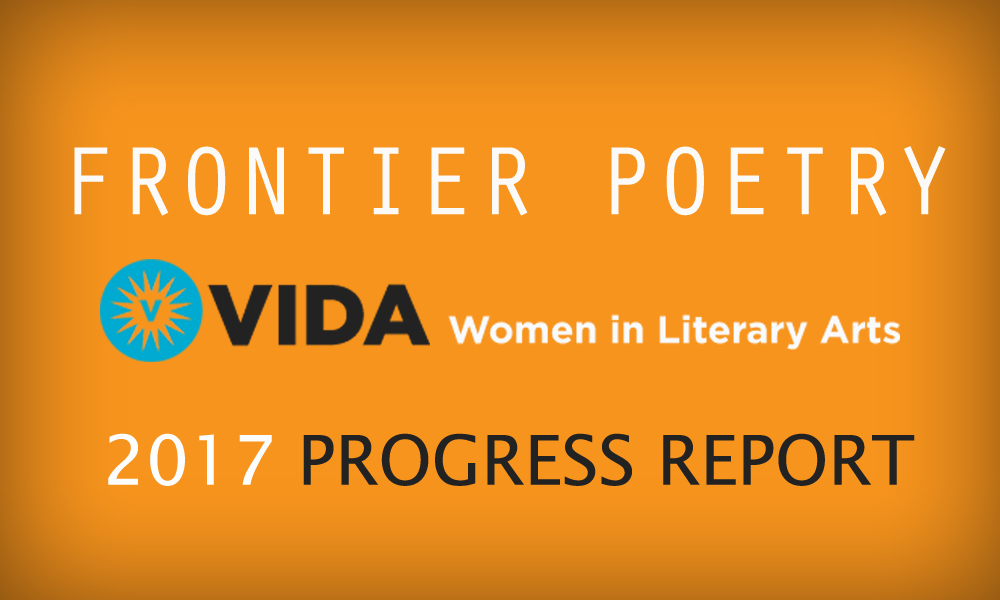Frontier Poetry VIDA 2017 Progress Report

Inspired by the 2016 VIDA Count, we want to have transparency for ourselves, our poets, and our readers. We’ve done an internal audit around issues of representation on our platform, and we are proud of the direction that Frontier is heading according to these numbers. Accurately reflecting the reality of diversity—and uplifting emerging voices from under-represented communities—is at the core of our mission at Frontier.
We have published/are publishing one poet a week, every week of 2017 (since our launch in May). With a few reprints and holidays, that’s a total of 29 new voices published/to be published for all of 2017. We have gathered information for this progress report based on the bios provided by our poets. In the future, we plan on gathering data through survey as VIDA does, including information on categories such as ability and age.
Gender Representation
Women represent 15 or 52% of our poets. 12 of our poets are men, at 41%, and 2 identify as non-binary at 7%.
Compare with Poetry: 49% women, 50% male, 1% non-binary.
Women of Color Representation
7 of our women poets are women of color, 47% of women published. Of our total poets in 2017, 24% of them are women of color.
The Nation had the highest of the magazines reviewed by VIDA with 25% of their by-lines as women of color.
Non-binary Representation
2 of our poets self-identify as non-binary, 7% of our total poets published.
In their survey, VIDA may have been most disappointed in the numbers of non-binary authors published in the larger literary landscape. At just 0.1%, New York Times Book Review had the highest number of non-binary by-lines.
Sexuality Representation
3 of our poets identified as Queer or not straight in their bios, for 10% of our total.
At 11%, VIDA found that the Boston Review had some of the best representation of non-straight writers in 2016.